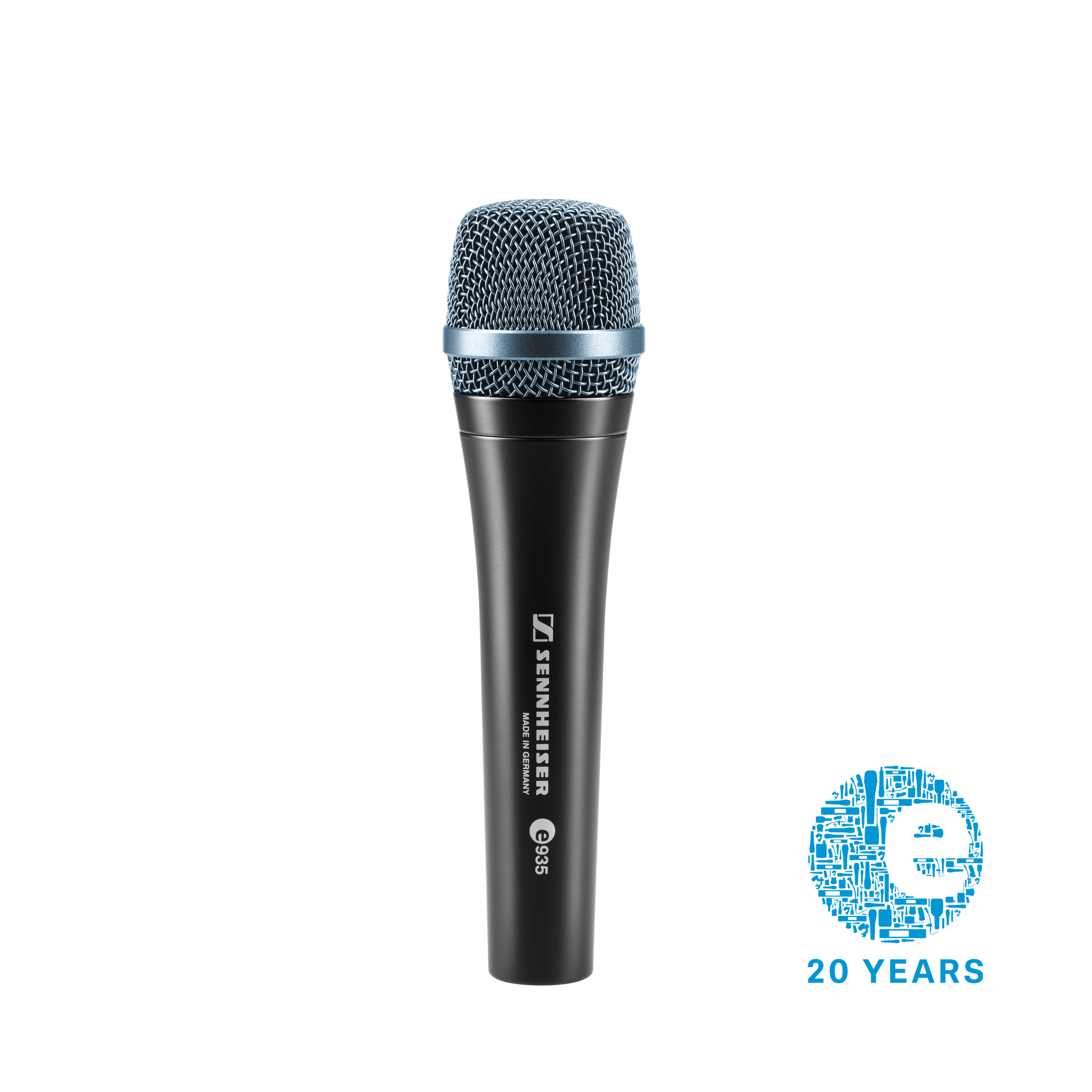e 935: More presence and clarity for vocals

The evolution e 935 is Sennheiser’s “Mic of the Month” for October
Wedemark, 2 October 2018 – The e 935 is among Sennheiser’s most popular vocal microphones: Paired with the audio specialist’s wireless systems from the Digital 9000 through to evolution wireless, the e935’s capsule is the No. 1 choice of many top artists around the globe. Sennheiser’s Mic of the Month for October (happyevolution.com) is known for its assertiveness: “With the e 935 we have given singing more bite. It makes the voice more muscular in a positive way and compensates for the electro-acoustic disadvantage of the singer compared with loud instruments,” said Sebastian Schmitz, Portfolio Manager at Sennheiser.

With the dynamic e 935 microphone, your voice gains significantly more presence and clarity. It literally brings your singing “to the fore” in the band mix.
“On the stage, you essentially always have the same trial of strength: Who is louder? How present are you in the mix? But this is not a fair contest, as when singing you only have your voice and a microphone,” commented Sebastian Schmitz, Portfolio Manager at Sennheiser, who views the situation as being almost like a competitive sports challenge. “Using only these tools, you are required to assert yourself – against the powerful amps of the electric guitars, energetically played drums, and sweeping ranges of sound from the keyboard. In principle, you can make instruments as loud as you like, but not your voice.”
“This was our precise starting point when developing the e 935: We asked ourselves, why exactly is this the case?” Schmitz recalled that the engineers working for Project Manager Gregor Zielinsky painstakingly analyzed this situation in 2002: they asked dozens of sound engineers and musicians and performed numerous measurements under real conditions and in the laboratory.
Larger than life
The results of the measurement process revealed some known issues that could be used as starting points in the development process, but it also revealed many new insights. Feedback was recognized as the biggest problem: “If you make the vocals louder, then at some point you will get feedback. We wanted to shift this physical boundary,” explained Schmitz.
However, the most important innovation did not address the challenge of volume but the frequency response: “The range 2.5 - 3 kHz gives the voice a particular presence. Unfortunately, those are the frequencies also often claimed by the electric guitar. So we significantly increased this range when fine-tuning the e 935,” continued Schmitz.

The solution was amazingly effective: “Suddenly it was no longer that important to make the singing louder – it asserted itself much better virtually automatically. And not only that. After the first tests, the sound engineers confirmed to us that the voice was not only present in the mix but also came across larger and more clearly,” recalled Sebastian Schmitz, adding: “This solution has one disadvantage, however: The e 935 is less forgiving of errors. Whereas in the past, small blunders went unnoticed, you now hear everything very clearly, particularly in the case of the harmonics. During the tests this resulted in a few, let’s say, epiphanies, among the singers.”
Big sound – big challenges
The construction of the e 935, however, presented the Sennheiser engineers with new problems, as it required large-scale production to be particularly precise. The stringent requirements placed on the evolution 800 series had to be exceeded still further. And so, over months of detailed work, the processes were fine-tuned until the requisite, extremely low tolerances had been complied with.
“Each technical solution offered by the e 935 was, in sound terms, a huge step forward – and an equally huge challenge in terms of production. Ultimately, however, we were able – without making any compromises - to build precisely the microphone we had designed, and in large quantities. Yes, we are a little bit proud of that fact,” summarized Schmitz, weighing an e 935 proudly in his hand.
Three tips for upgrading your vocal sound
With the e 935, you will get a vocal microphone that effortlessly brings your voice to the fore in the band mix. In many aspects it is forgiving, for example in terms of the angle at which you hold it in front of your mouth. Nevertheless, when using it there are a few things you should bear in mind.

1 - No pain no gain
The e 935 is extremely feedback-proof – but not infinitely so. If you want to deliberately cause that painful ‘whistling’ sound, simply handle the microphone as near to the basket as possible. This causes the range filtered out by the cardioid characteristic to become “blocked” and results in substantial feedback. To avoid this, you should hold the e 935 where intended, namely on its stable shaft, far away from the microphone basket.
2 - Come closer!
To be able to optimally assert itself, the e 935 requires an input signal as loud as possible. For this reason, you should hold it as near to your mouth as you can, even making contact with your lips if you wish. In this way you are, incidentally, also making better use of the proximity effect, which emphasizes the low frequencies of your voice and hence ensures a greater sound volume.
3 - Is it suitable?
Finding out which is the right vocal microphone for you is best done by trying out and comparing models. On the one hand it must suit your voice, on the other, fit your genre. This is why it is important that you test all potential microphones in your natural environment. Because testing it in the store, without your band, you will sound different from in the rehearsal room with all the instruments.
e 935 tutorial video: https://www.youtube.com/watch?v=2ZiAiH5r_HQ
Boxout: The evolution 900 series
The first field tests for the evolution 900 series began in 2004, six years after the launch of the evolution series. The 900 family was intended to continue evolution’s success story in the premium and professional segment. The developers at Sennheiser did not rely merely on measurement results and experience in electro-acoustics but also on ‘golden ears’: In numerous field tests, the series’ sound was adapted for professional stage use. The aim: every microphone should deliver a solid sound immediately, which can then be adjusted according to the preferred style and taste. With three vocal and six instrument microphones, the premium series covers a substantial proportion of common live applications.


